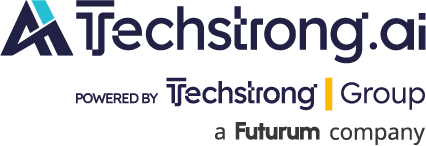
In AI, data storage is no longer just about capacity; it’s about intelligent, high-performance, and secure access to the vast datasets that fuel ML models. MinIO, a software-defined object storage developer, recently showcased MinIO AIStor at Cloud Field Day, demonstrating how it’s designed from the ground up to meet the demanding requirements of AI and analytics workloads. The presentations highlighted MinIO’s commitment to object-native architecture, addressing key challenges faced by enterprises in securing private data, gaining insights, and deploying AI agents.
The Object-Native Advantage: A Foundation for AI Scale
Jason Nadeau, MinIO’s product marketing lead, underscored a critical industry shift: AI and analytics storage is inherently object-native today. He noted that major LLM makers like OpenAI and Meta built their models using object storage, and data lakehouse tools have also embraced this paradigm. This contrasts sharply with traditional on-premises “retrofit object gateway” architectures, which involve multiple layers—gateways, metadata databases, SAN/NAS backends, and complex storage networks. These multi-layered setups introduce significant constraints, including performance bottlenecks, data inconsistency, and limited capacity scale.
MinIO AIStor, in contrast, champions a “single layer” object-native architecture. It is gateway-free, stateless, and direct-attached, writing all metadata atomically with the actual data using a deterministic hash, thus eliminating the need for a central metadata database. This foundational design enables crucial capabilities such as strict consistency (guaranteed read-after-write and list-after-write correctness) at massive scales, and leverages SIMD acceleration at the chip level for superior performance. This robust architecture allows AIStor to scale from petabytes to exabytes while delivering maximum performance from commodity hardware, ultimately leading to what MinIO claims is best-in-class Total Cost of Ownership (TCO). MinIO AIStor is the enterprise version, distinct from the open-source community edition, offering production-ready features like a management console, encryption, replication, and Quality of Service.
AIHub: Securely Managing AI Models and Datasets
A cornerstone of AIStor’s innovation is AIHub, a feature MinIO designed to safely and securely store private datasets, models, and fine-tuned models directly in AIStor buckets. Recognizing Hugging Face as the de-facto standard in the AI world, AIHub is fully Hugging Face compatible but runs entirely on-premises. This compatibility ensures developers can use familiar APIs for training, loading datasets, and fine-tuning models, pushing them to their private AIStor instead of a public cloud.
Dil Radhakrishnan, an engineer at MinIO, demonstrated AIHub’s integration with Jupyter Notebook, where a custom plugin allows data scientists to browse privately stored models and datasets directly. AIHub intelligently caches models asynchronously from public Hugging Face if not found locally, ensuring it serves subsequent requests directly from the private AIStor, reducing external dependencies and improving access speeds. The primary use case for AIHub, as observed with enterprise customers, is fine-tuning open-source base models like Llama or Qwen with private, custom datasets.
AIHub offers remarkable deployment flexibility, supporting multiple isolated AIHub instances for different stages of the AI lifecycle—from data scientists building datasets, to ML engineers fine-tuning models in dev environments, to QA, and finally a dedicated production AIHub for deployment and inference. Furthermore, AIHub supports automatic data and model versioning through its Hugging Face compatibility (leveraging Git-based protocols for branches, commits, and pull requests) or through bucket versioning within the object store.
PromptObject: Intelligent Insights Directly from S3 API
MinIO highlighted a paradigm shift from “put/get” to “put and prompt” with the introduction of PromptObject. This feature embeds generative AI capabilities directly into the S3 API, allowing developers to query objects stored in AIStor without first downloading them or building complex ML pipelines. Instead of maintaining separate vector databases and RAG pipelines for single-object inference, PromptObject extracts information from an object and passes it to an LLM in an “LLM-friendly manner.”
For example, PromptObject can transform an image into Base64 encoding, or automatically tokenize text data. The power of PromptObject lies in its ability to transform unstructured data (images, PDFs, videos) into structured JSON by allowing developers to define a desired schema. This makes it easier to work with the data in downstream applications or ingest it into databases for analytics. PromptObject is compatible with OpenAI API-compatible inference servers, including NVIDIA NIMs, which allows customers to run pre-packaged, containerized LLMs in their own environments, leveraging NVIDIA GPUs. While PromptObject excels at single-object interactions, MinIO acknowledges that RAG pipelines remain relevant for scenarios involving thousands of objects where the specific object containing the desired information is unknown.
AIStor MCP Server and AI Agents: Multi-Object Interaction
Building on PromptObject, MinIO introduced the AIStor Model Context Protocol (MCP) server, designed primarily for AI agents to interact with multiple objects simultaneously. This aligns with the recent adoption of the Model Context Protocol by major AI providers like OpenAI and Google. The MinIO AIStor MCP server exposes tools as MCP servers, allowing clients that support the protocol to interact with the AIStor cluster.
The AIStor MCP server enables agents to perform tasks such as tagging all objects in a bucket, identifying content, and extracting insights. It also allows for building visualizations of the AIStor cluster, providing administrators and developers with actionable intelligence. Security is paramount; by default, the MCP server is read-only, and any create or delete operations require explicit administrative force and appropriate access key controls, preventing “unhinged” actions. The MCP server operates as a hybrid solution, running near the client while the core AIStor resides in the private infrastructure, communicating securely via TLS certificates.
Optimizing Performance with NVIDIA Technologies
MinIO’s collaboration with NVIDIA further enhances AIStor’s performance for intense AI workloads. The integration with NVIDIA Nixel addresses the critical KV cache bottleneck in LLM inference. Nixel enables the offloading of historical conversations or computed tokens from GPU memory to the object store, freeing up valuable GPU resources. When needed, Nixel automatically pulls this data back into the inference server without re-computation, improving efficiency.
Another significant advancement is GPU Direct Object, a capability developed in close partnership with NVIDIA. This bypasses the CPU and host memory, allowing direct read/write operations between storage and GPU memory. While the S3 API remains the control channel (HTTP), the data channel utilizes RDMA (Remote Direct Memory Access) over Converged Ethernet (RoCE), accelerating data flow to GPUs. This dramatically reduces the computational burden on CPUs, shifting primary processing to GPUs while eliminating CPU-related performance bottlenecks.
MinIO also optimized its software to run within NVIDIA BlueField SmartNICs, which feature ARM chips. MinIO AIStor’s small footprint (under 100 MB) allows it to run entirely within these SmartNICs, leveraging SIMD acceleration for high performance in low-resource environments. This innovation paves the way for low-power, high-density deployments, such as JBOF (Just a Bunch of Flash) systems with SmartNICs, addressing the critical power consumption challenges in the AI world.
Real-World Impact and Future Outlook
MinIO AIStor is already making a substantial impact, with impressive deployments across various industries. Examples include a large autonomous vehicle manufacturer running over 1.35 exabytes on AIStor, a leading cybersecurity company managing 1.25 petabytes for security analytics, and a major FinTech provider handling 30 petabytes of transactional data. These examples highlight AIStor’s ability to handle unprecedented scale and performance for mission-critical applications where traditional storage solutions have failed.
MinIO emphasizes its direct engineer support model, providing customers with direct access to engineers without navigating L1/L2 support queues. The company continues its rapid innovation, with future plans including channel bundle SKUs to simplify hardware and software acquisition. MinIO AIStor clearly positions itself as the foundational object storage for the next generation of AI and analytics workloads, offering a powerful, scalable, and secure platform for enterprise AI initiatives.

